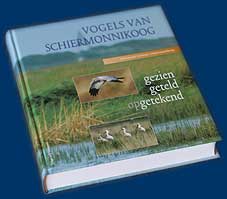| A couple of months ago, mr. Otto Overdijk delivered a lecture on Spoonbills to an audience of people involved in the protection of grassland birds.
Mr. Overdijk has been doing research on this species since many years, and as an employee of the dutch nature conservation organisation Natuurmonumenten, manages the Spoonbill colony on the island of Schiermonnikoog.
When he went ringing the young chicks one evening in May, it formed a good opportunity to accompany him to the colony, a place where admittance is normally forbidden for clear reasons.
So on our way to Schiermonnikoog!
I'd like to thank mr. Otto Overdijk of Natuurmonumenten. |
||
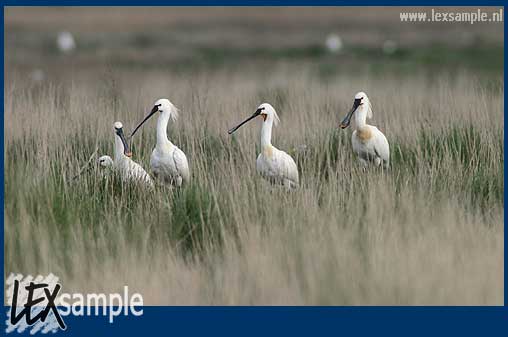 |
||
| Schiermonnikoog has two major salt-marshes, (kwelder in Dutch). One is called the Binnenkwelder and the other the Oosterkwelder. The latter hosts the biggest colony of Spoonbills in the Netherlands. Spoonbills prefer the dynamic environment of salt-marshes: it is a safe place with sufficient food to find in the surrounding areas.
Alarmed by their neighbours (Seagulls), the Spoonbills (Platalea leucorodia) are on the look-out when we approach their colony. |
||
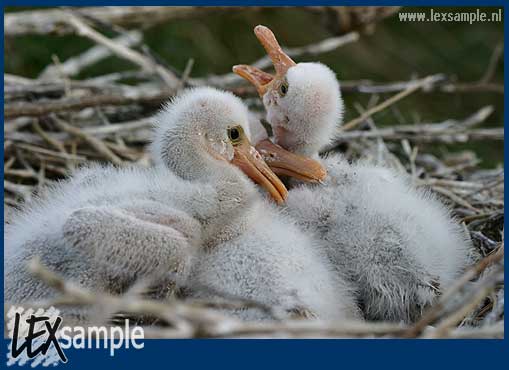 |
||
| The Spoonbill chicks are still unable to fly and so they are an easy catch to ring. Their parents are waiting a bit further on, at a safe distance. |
||
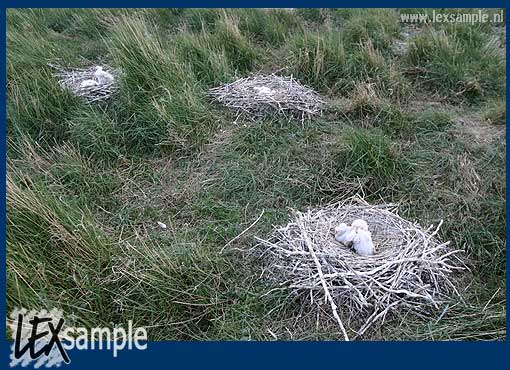 |
||
| Spoonbills construct their nests of simple branches. The open field allows them to quickly spot any possible danger from far away. The colony on Schiermonnikoog has been in existance only since 1990, when one pair started breeding here. Five years later, their number had grown to 47 pairs, with no less than 163 in 1998.
|
||
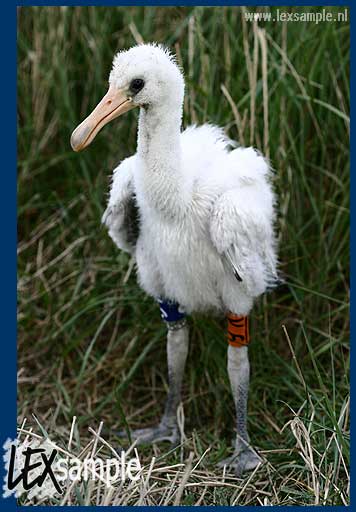 |
||
| A ringed chick doesn't look very pretty. But the ringing details will contribute to the ongoing Spoonbill research. |
||
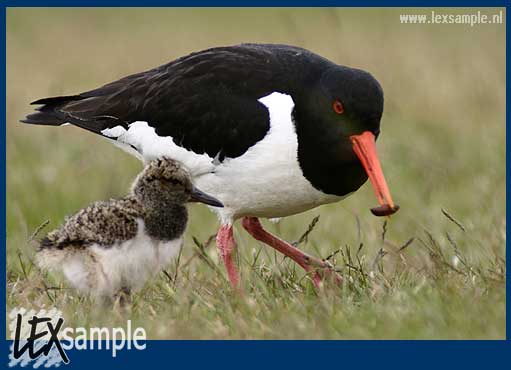 |
||
| The campsite where we're staying is also the home of this Oystercatcher (Haematopus ostralegus), busy digging in the ground to look for food for its young. The other parent is around too, sometimes resting and sometimes on the watch-out. |
||
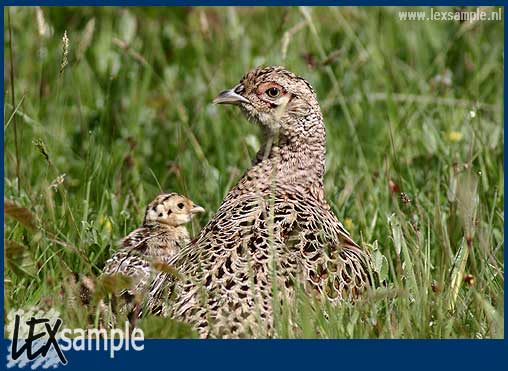 |
||
| A mother Pheasant (Phasianus colchicus) safely routes her chicks through the grass around the area of the Westerduinen (West dunes). |
||
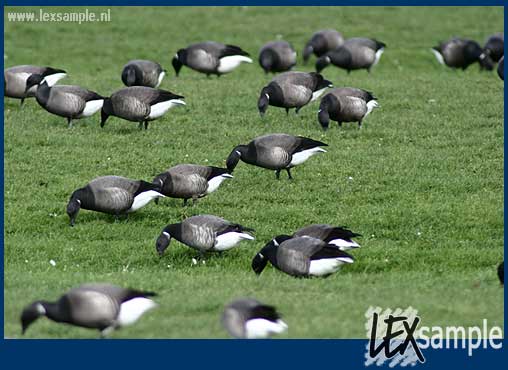 |
||
| Grazing Brent Geese (Branta bernicla) are found in the meadows of the so-called Bancks polder. People say there are too many geese. But who are we to judge when millions of people live in this small country? |
||
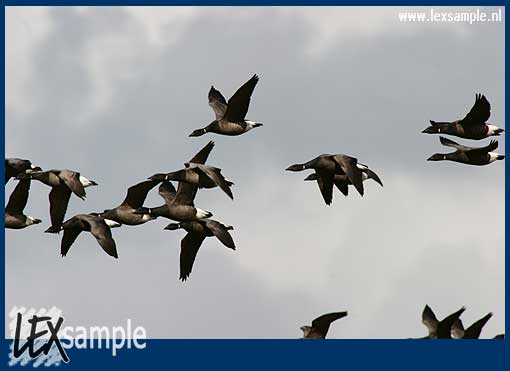 |
||
| Geese in flight is one of the most fascinating views nature can offer, in my opinion. No matter if they fligh high up in the sky in V-shape, or, like these Brent Geese, fly in small groups from the sea to the meadows. All that cackling, what would they be talking about? |
||
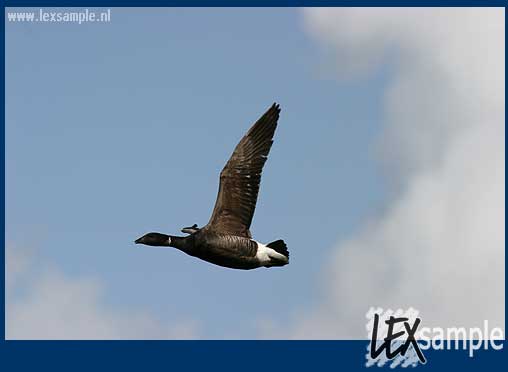 |
||
| Although in Spring most Brent Geese migrate back North, some stay here during Summer. |
||
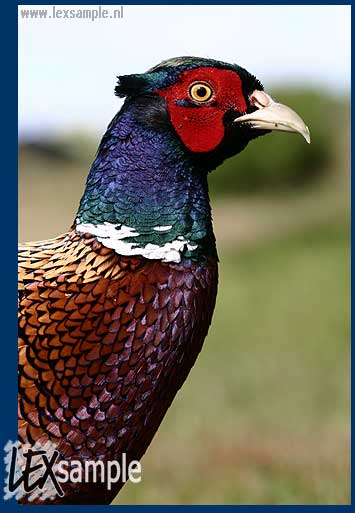 |
||
| Taking bird photographs can sometimes be a real challenge. Not in this instance though. This wild Pheasant (Phasianus colchicus) curiously inspected our tent on the campsite, thus presenting us with a good opportunity to admire his shining feathers. |
||
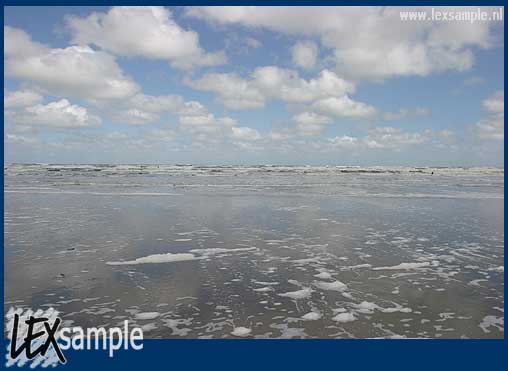 |
||
| Another time, we walked along the seaside, looking for Sanderlings. We did find them, but they were too busy feeding to have their picture taken. But it's a splendid view of the horizon anyway... |
||
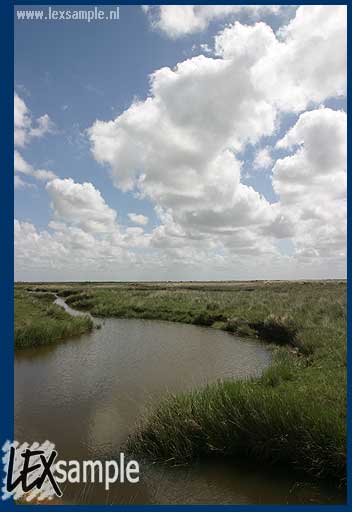 |
||
| In 1989 Schiermonnikoog got the status of National Park. The island is one of the largests nature reserves of our country. This photograph was taken at the dunes called Kobbeduinen, where cattle freely wander around in order to keep the vegetation low. |
||
More information
|
